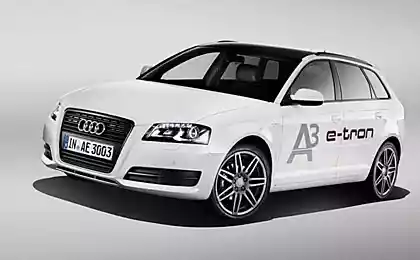459
Audi self-driving electric car accelerates to hundreds in 3.9 seconds

This car has two electric motors, acceleration 0 to 100 km/h in less than four seconds and a top speed of 250 km/h But its most important feature, perhaps, is self-management. At the consumer electronics show in Shanghai, the company Audi introduced a new electric supercar without a driver.
Audi R8 e-tron uses laser scanners, video cameras, radars and ultrasonic sensors to map the environment in which it is guided during movement. The data from the scanners and sensors are processed by the Central computer of the vehicle, the newspaper Daily Mail.
It should be noted that Audi is not the only company developing self-driving cars, but it does everything that its drone has become one of the fastest cars in this segment.
According to the manufacturer, the concept car is equipped with two engines battery operated with a capacity of 456 horsepower, allowing it to accelerate from 0 to 100 km/h in just 3.9 seconds. Supercar able to go 450 kilometers before it will require recharging, which takes less than two hours.
Audi says that the R8 e-tron will be used as a "high-tech mobile laboratory" for testing their technologies.
R8, the creators sought inspiration from the science fiction film Stephen Lisberger "Tron" 1982 release. In 2010 he released the sequel picture "Tron: Legacy".
To maximize the space inside the car to lower the center of gravity of the Audi's engineers have built into it a T-shaped battery 92 kWh using the new lithium-ion technology.
The back of the body is made of carbon fiber polymer reinforcement, and the walls of the Luggage compartment have corrugated surface to absorb impact energy in the event of a rear-end collision. In this way the company tries to increase safety of the passengers of the car that has no driver.published
P. S. And remember, only by changing their consumption - together we change the world! ©
Source: hi-news.ru
Gender stereotypes: Boys don't cry, girls don't fight!
Why you should not throw away sprouted garlic





















